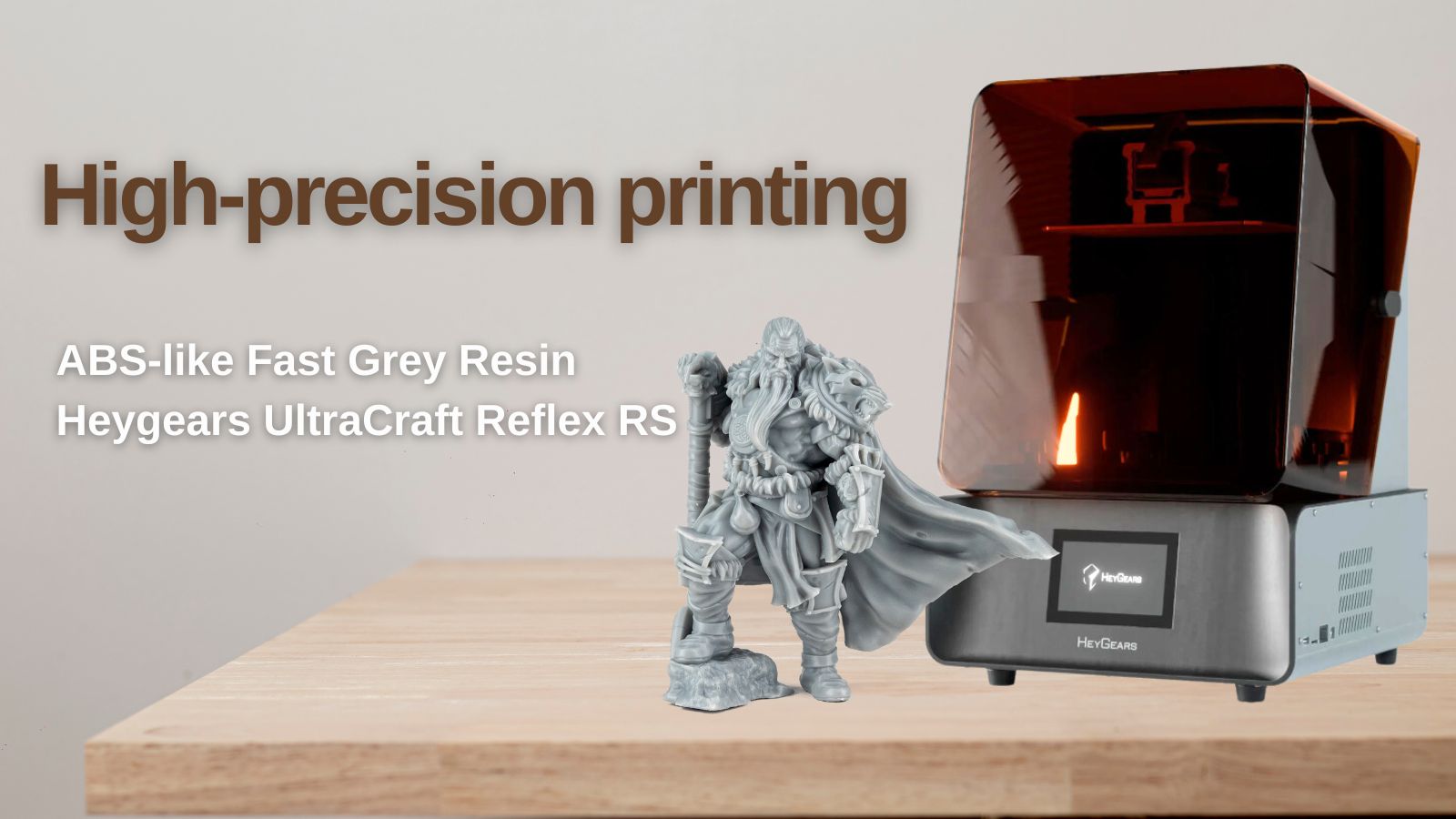Heygears Reflex RSは、革新的な機能と優れた精度により、3Dプリントコミュニティで高い人気を博しています。Reflex RSでSiraya TechのBlu Lava Blackを使用したテストに成功した後、私たちは新たなエキサイティングなテスト、Siraya TechのABSライクなFast Greyを使用したプリントへと進みました。
この多用途で耐久性のある樹脂は、その機械的特性と滑らかな表面仕上げで知られており、プロトタイプや複雑なモデルに最適です。
このブログ記事では、Heygears Reflex RS で ABS のような Fast Grey を使用する際の最適な設定について説明し、結果を最大化するためのヒントをいくつか紹介します。
Heygears Reflex RSが際立つ理由
Reflex RSは、ありきたりなレジンプリンターではありません。Siraya TechのABSライクなFast Greyのような高性能素材を使ったプリントに最適な機能が満載です。その魅力をご紹介します。
-
加熱・パルス放出樹脂タンク: この高度な機能により、印刷中の樹脂の流れがスムーズになり、印刷の失敗を回避して高いディテールを実現できます。
-
8K モノクロ LCD スクリーン: この高解像度スクリーンは、あらゆる複雑な詳細を捉え、優れた表面仕上げと精度を実現します。
-
強力な Z 軸安定性: Reflex RS を使用すると、一貫性と信頼性の高い印刷を実現するために不可欠な、レイヤーのシフトが最小限に抑えられ、レイヤーの高さが正確になります。

Siraya Tech ABSライクFast Grey:強度、耐久性、精度
ABSライクなFast Greyは、デスクトップレベルの印刷、耐久性、印刷の容易さ、そして優れたディテールを実現するために配合された3Dプリント用樹脂です。扱いやすく、強度があり、ディテールにこだわったプリントを求めるユーザーに最適です。この樹脂が優れている理由は以下の通りです。
-
優れた流動性により、印刷速度が速くなり、成功率も向上します。
-
丈夫で壊れにくく、偶発的な落下にも耐えられます
-
お手入れが簡単で、印刷時間を短縮します
-
優れたディテール、正確な印刷。
-
卓上ミニチュア、デジタル彫刻、その他幅広い用途に最適
完璧な設定:Reflex RSでABSのようなFast Greyを印刷する
このテストでは、プリンター設定で PAWW10 樹脂プロファイルを使用することで、Reflex RS のロックダウンされた樹脂プロファイルの回避策が見つかりました。

このプロファイルは、Siraya Tech の ABS のような Fast Grey 樹脂に最も近いマッチングを提供し、信頼性が高く高品質の結果を保証します。

成功のためのヒント
-
適切な樹脂の準備: 樹脂の粘度が適切であることを確認するために、使用する前に必ず ABS のような Fast Grey のボトルをよく振ってください。
-
一貫した周囲温度: 最適な結果を得るには、室温を約 25°C (77°F) に安定させます。
-
サポート構造: 特に複雑な形状の場合は、印刷の失敗を防ぐために適切なサポート構造を使用します。
-
後処理: 印刷後は、イソプロピルアルコールで部品を洗浄し、強度と耐久性を高めるために紫外線下で後硬化することを検討してください。
- テスト印刷:開始前にテスト印刷します。
Greedy 3Dからのテスト
The Broke Nerd の Rhino Bust モデル。Siraya Tech が HeyGear Ultracraft Reflex RS プリンターで印刷しました。


結論
Heygears Reflex RSでSiraya TechのABSライクFast Greyをプリントすることは、滑らかで精緻、そして精密なプリントを作成するための素晴らしい選択肢です。PAWW10レジンプロファイルを使用し、推奨設定に従うことで、この強力なレジンとプリンターの組み合わせの潜在能力を最大限に引き出すことができます。
機能プロトタイプ、エンジニアリングパーツ、あるいは美しいミニチュアなど、ABS樹脂のようなFast Greyなら、必要な強度とディテールを実現できます。楽しい印刷を!

